| XLR CONNECTOR: |
|
Probably
the most common professional audio connector is the
3-pin XLR connector. These are often referred as Cannon
connectors, after their original manufacturer; even
though today they are also made by Switchcraft, Neutrik
and others.
|
|
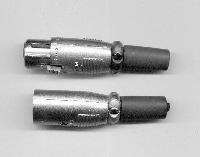 |
 |
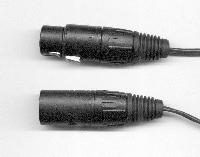 |
| CANNON |
SWITCHCRAFT |
NEUTRIK |
|
3-pin
XLR connectors are used for balanced, analogue
audio circuits -- both microphone and line level.
-
Pin 1 is the ground pin and
protrudes past Pins 2 and 3 in the female
connector. When inserting the male; the ground
pin makes contact first. This helps to avoid
annoying buzzes and pops when connecting live
equipment.
-
Pin 2 carries the "HOT" or
"in-phase" signal.
-
Pin 3 carries the "LOW" or
"out-of-phase" signal.
|
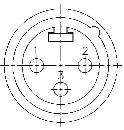 |
3-pin
XLR connectors are also used for AES/EBU professional
digital audio interconnections.
|
|
Clearcom
"party-line" intercoms use 3-pin XLRs for
interconnection between belt-packs.
|
|
|
|
4-pin
XLR connectors are used for the headset on
Clearcom intercoms.
|
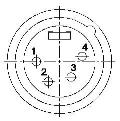
|
5-pin
XLRs are used for control signals for various
pieces of lighting equipment (DMX -- Digital MultipleX).
|
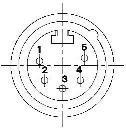
|
|
|
A mini,
4-pin version of the XLR is used as the input
connector on wireless microphone body packs.
|
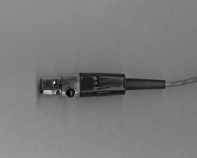 |
|
| TIP-RING-SLEEVE (PHONE or 1/4 INCH):
|
|
The
Tip-Ring-Sleeve (TRS) or Quarter-inch
phone plug is often used in place of
an XLR connector on audio equipment. The TRS
is less expensive and takes up less space on the
front or rear panel.
|
|
Tip-Ring-Sleeve
(TRS), Stereo or dual-circuit phone
plugs are used for:
-
balanced inputs and outputs on audio equipment,
like consoles, equalisers or power amps.
- TIP
-- corresponds to Pin 2 of the 3-pin XLR
connector;
- RING
-- to Pin 3
- SLEEVE
-- to Pin 1 (ground).
- stereo
headphones
- TIP
-- left earpiece
- RING
-- right earpiece
- SLEEVE
-- common (return).
- Many
consoles use a TRS connector for
the channel insert. This is a kind signal
"detour" out of the console and back, to allow
an external FX processor to be connected inline
with the signal path.
- TIP
-- is used for the send signal
- RING
-- for receive
- SLEEVE
-- common (return).
|
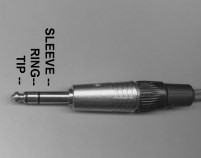
|
Tip-Sleeve
(TS), Mono or single-circuit phone
plugs are used on consumer and semi-pro equipment.
They are found on:
- microphones
- electric
guitars
- some
semi-pro processors (e.g. SPX-90, 900)
- passive
loudspeakers
|
 |
|
| RCA (phono):
|
|
RCA
plugs, also known as phono plugs are
unbalanced connectors used on consumer audio and video
equipment. More expensive, high-end models may use
nickel or gold-plated versions.
|
|
Originally used
to connect microphone-level outputs of a phono cartridge
to the preamp; they are more commonly used for
line-level signals today --
- audio
inputs and outputs of audio and video tape
players/recorders
- line-level
inputs and outputs on computer sound cards
- video
in/out connectors on VCRs and cameras
- SPDIF
digital audio interconnections on consumer gear.
|
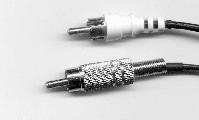
|
RCA to
RCA cables are a common source of hum
caused by so-called ground loops.
The shield of the cable serves as the ground return for
the audio or video signal. The chassis at each end of
the cable can be at different AC potentials because they
are plugged into different AC circuits or mounted in
different racks. This can cause 60 Hz AC to flow in the
shield. This 60 Hz signal is superimposed on the audio
or video signal.
Depending on the gain in the rest of the system, even a
few micro-amperes of current can result in an audible
hum in a sound system or visible rolling "hum bars" in a
video picture.
For this reason, avoid using RCA-RCA cables to
interconnect audio or video equipment more than a few
feet apart, or in different rooms. If RCA
connectors must be used, make sure all pieces of
interconnected equipment are fed power from the same AC
circuit breaker. (same duplex U-ground connector.)
|
|
|
| 1/8 INCH (mini) STEREO PHONE:
|
|
The eighth-inch
or mini stereo phone plug is a smaller version
of the 1/4 inch stereo phone plug. It is used as:
|
 |
A
4-contact version of the 1/8 inch mini phone plug is
used as the headset connector on mobile phones.
- TIP
-- left earpiece
- RING
1 -- right earpiece
- RING
2 -- common (return)
- SLEEVE
-- microphone and power.
|
 |
|
| RJ45 MODULAR CONNECTOR:
|
|
The
RJ45 modular connector is seen more and more often in
the theatre where it is used in:
- connecting
an Ethernet network to a computer or other digital
device.
- connecting
an analog (VGA) or digital (HDMI) video source to
a video projector or monitor. Usually active or
passive adapters are required at both ends of the
signal path.
- connecting
a digital audio console to a digital stagebox, a
kind of digital "snake"
- connecting
DMX-enabled lighting instruments to a lighting
controller.
|
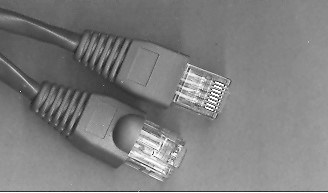
|
|





